Abstract
The level of social recovery achieved by a representative series of 50 young adults was assessed six months after a severe closed head injury (post-traumatic amnesia greater than 24 hours). Work, leisure activities, and contact with friends were the areas of life most affected, whereas family life and marital relationships appeared to withstand changes at this stage in the recovery process. Many patients were still suffering from subjective symptoms, but these appeared to have relatively minor effects on ability to resume normal activities. Physical disability was a much more important factor at this stage. A control group of patients with limb injuries suffered similar disruption of their lives, but reported few subjective complaints.
Full text
PDF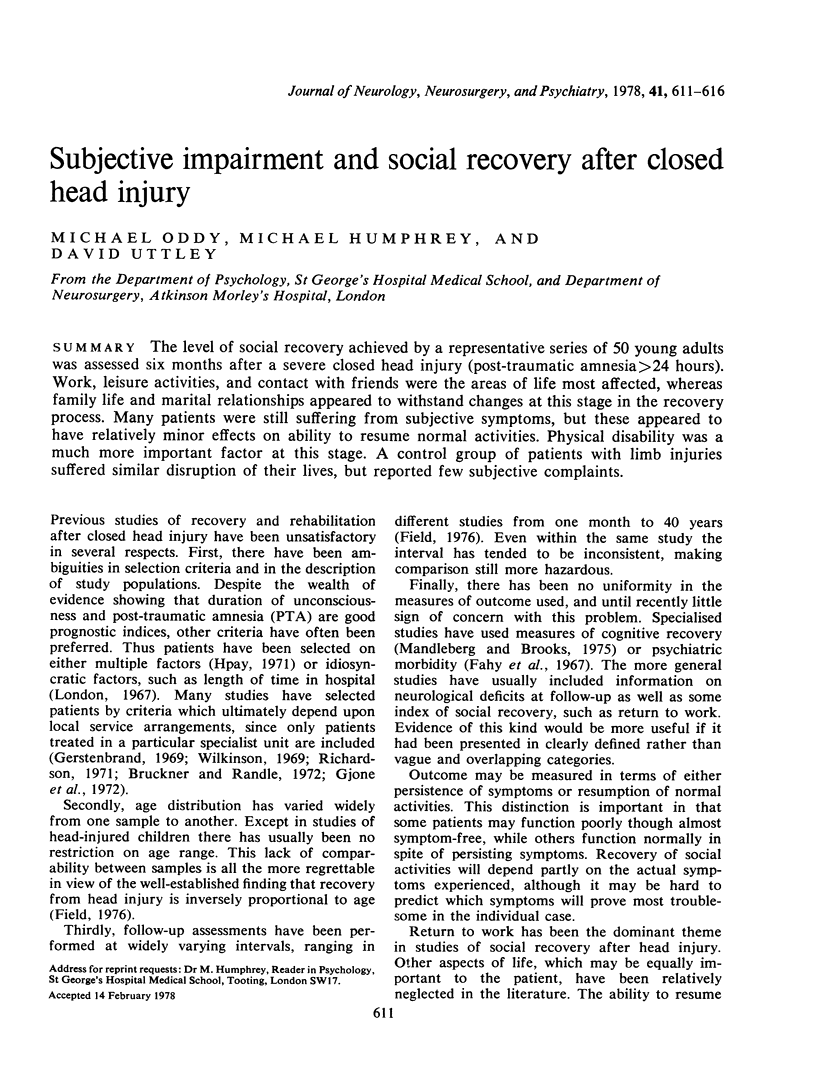
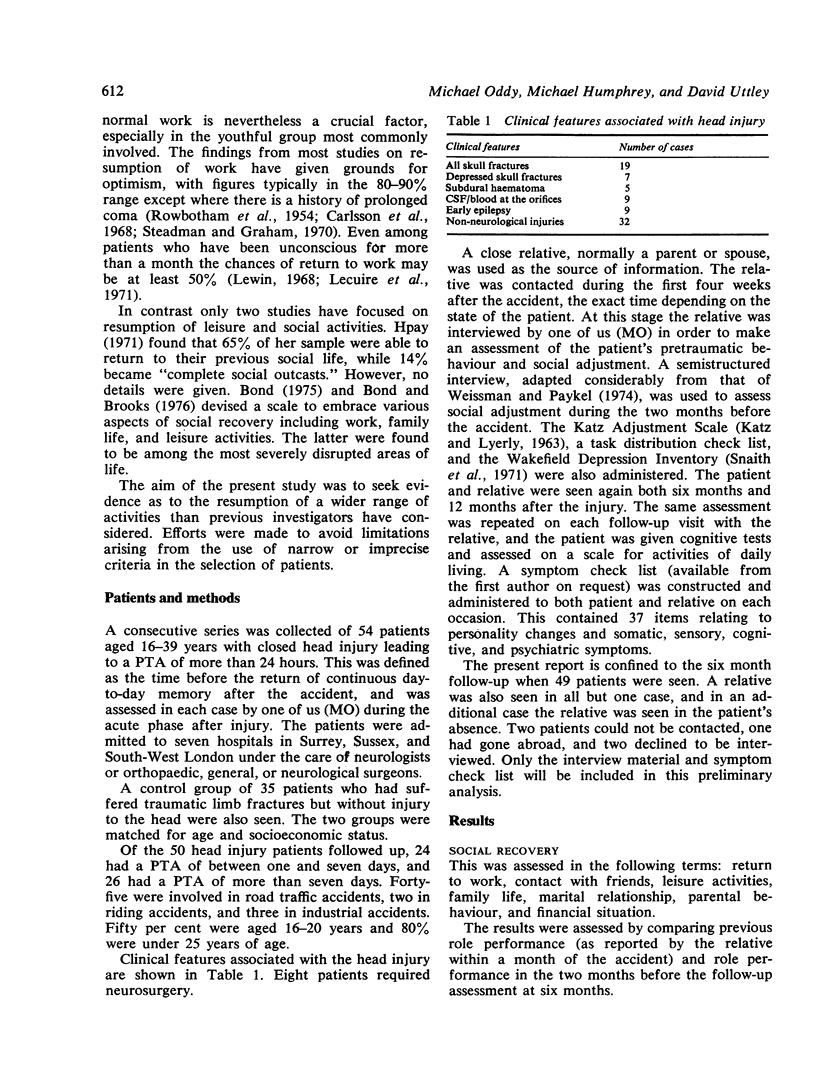
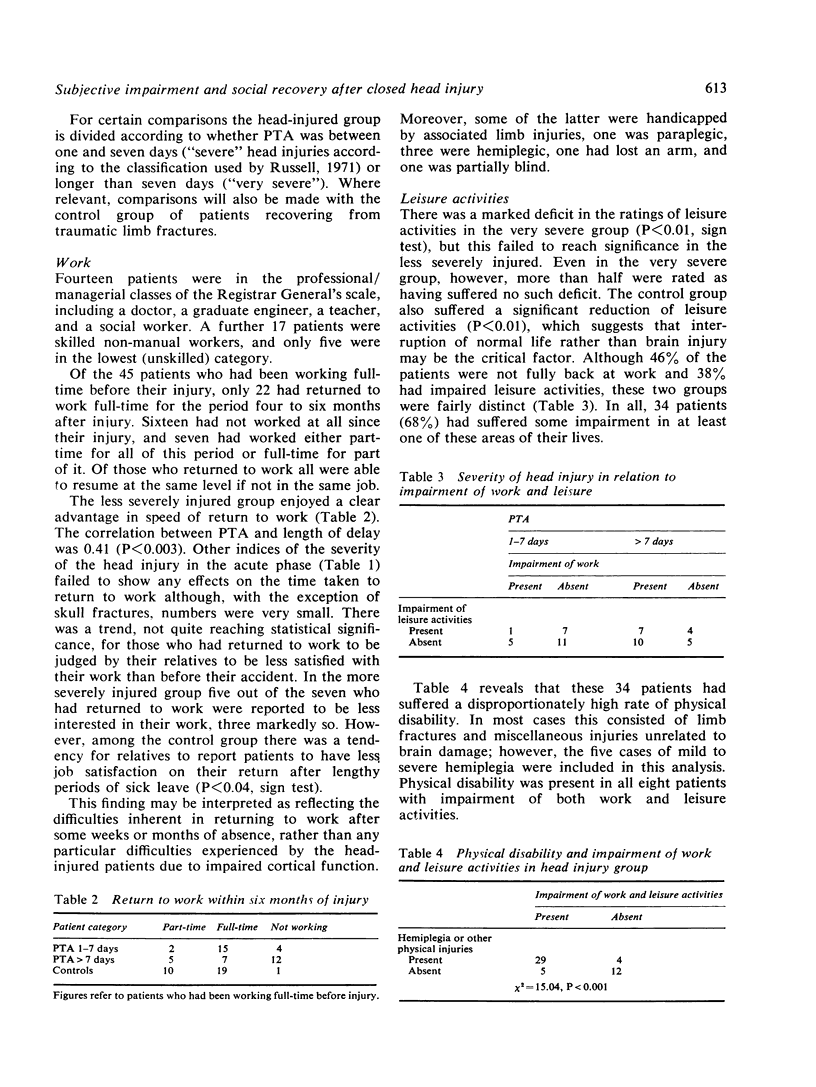
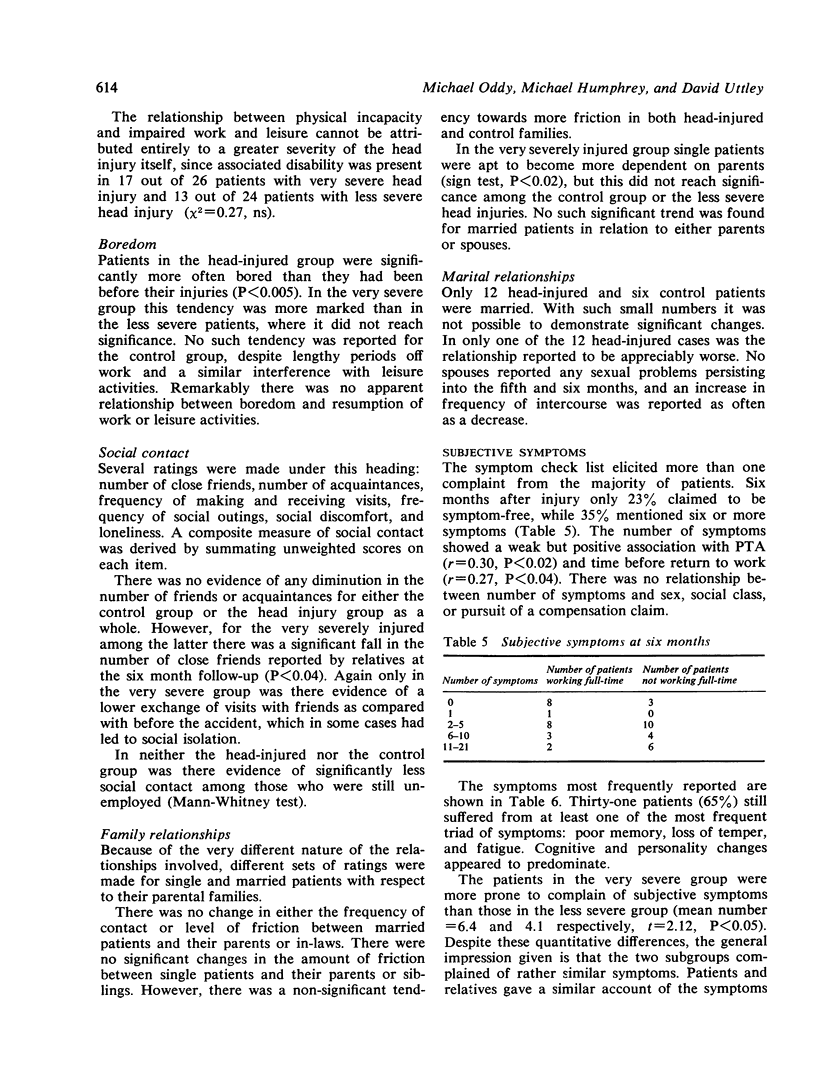
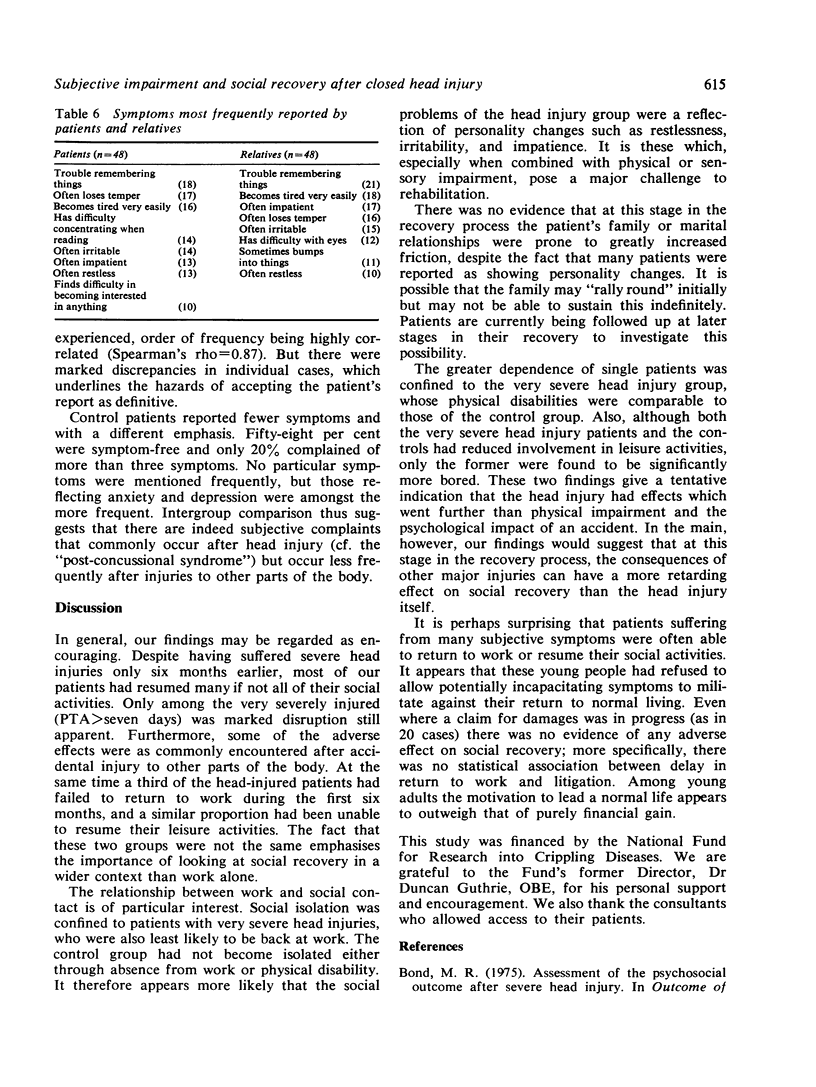
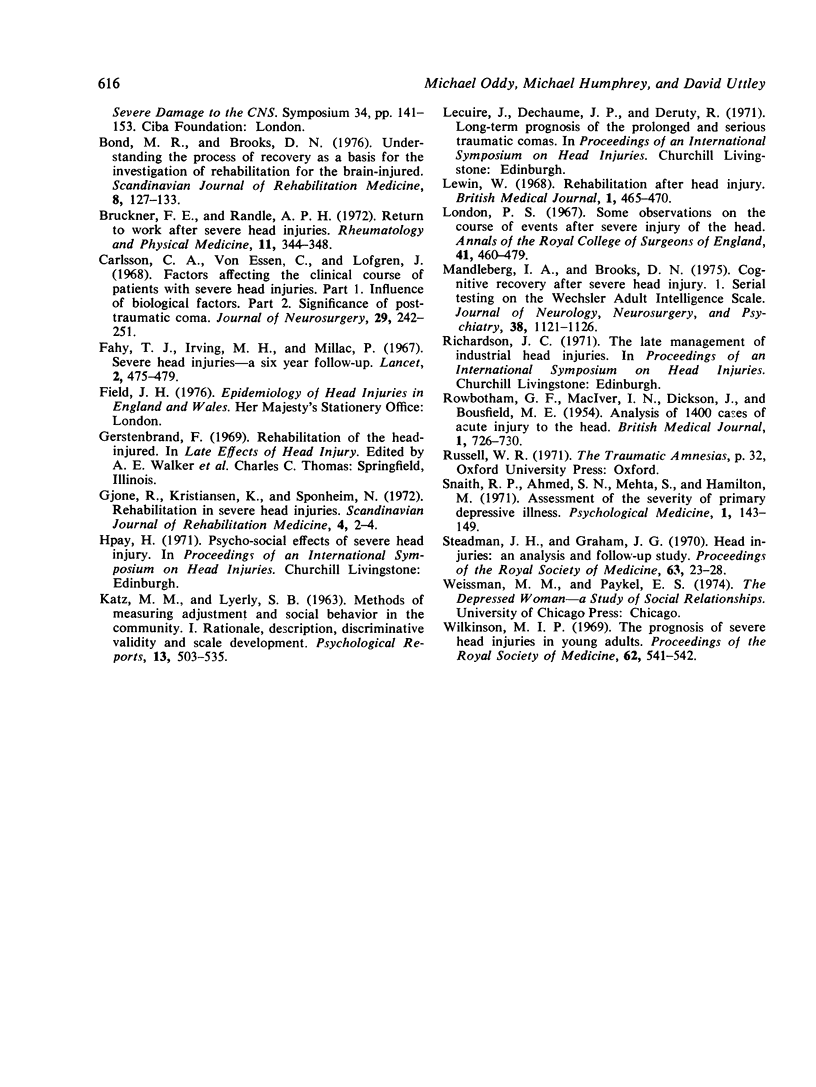
Selected References
These references are in PubMed. This may not be the complete list of references from this article.
- Bruckner F. E., Randle A. P. Return to work after severe head injuries. Rheumatol Phys Med. 1972 Aug;11(7):344–348. doi: 10.1093/rheumatology/11.7.344. [DOI] [PubMed] [Google Scholar]
- Carlsson C. A., von Essen C., Löfgren J. Factors affecting the clinical corse of patients with severe head injuries. 1. Influence of biological factors. 2. Significance of posttraumatic coma. J Neurosurg. 1968 Sep;29(3):242–251. doi: 10.3171/jns.1968.29.3.0242. [DOI] [PubMed] [Google Scholar]
- Fahy T. J., Irving M. H., Millac P. Severe head injuries. A six-year follow-up. Lancet. 1967 Sep 2;2(7514):475–479. doi: 10.1016/s0140-6736(67)91650-9. [DOI] [PubMed] [Google Scholar]
- Gjone R., Kristiansen K., Sponheim N. Rehabilitation in severe head injuries. Scand J Rehabil Med. 1972;4(1):2–4. [PubMed] [Google Scholar]
- Lewin W. Rehabilitation after head injury. Br Med J. 1968 Feb 24;1(5590):465–470. doi: 10.1136/bmj.1.5590.465. [DOI] [PMC free article] [PubMed] [Google Scholar]
- London P. S. Some observations on the course of events after severe injury of the head. Hunterian Lecture delivered at the Royal College of Surgeons of England on12th January 1967. Ann R Coll Surg Engl. 1967 Dec;41(6):460–479. [PMC free article] [PubMed] [Google Scholar]
- Mandleberg I. A., Brooks D. N. Cognitive recovery after severe head injury. 1. Serial testing on the Wechsler Adult Intelligence Scale. J Neurol Neurosurg Psychiatry. 1975 Nov;38(11):1121–1126. doi: 10.1136/jnnp.38.11.1121. [DOI] [PMC free article] [PubMed] [Google Scholar]
- ROWBOTHAM G. F., MACIVER I. N., DICKSON J., BOUSFIELD M. E. Analysis of 1,400 cases of acute injury to the head. Br Med J. 1954 Mar 27;1(4864):726–730. doi: 10.1136/bmj.1.4864.726. [DOI] [PMC free article] [PubMed] [Google Scholar]
- Snaith R. P., Ahmed S. N., Mehta S., Hamilton M. Assessment of the severity of primary depressive illness. Wakefield self-assessment depression inventory. Psychol Med. 1971 Feb;1(2):143–149. doi: 10.1017/s0033291700000064. [DOI] [PubMed] [Google Scholar]
- Steadman J. H., Graham J. G. Head injuries: an analysis and follow-up study. Proc R Soc Med. 1970 Jan;63(1):23–28. [PMC free article] [PubMed] [Google Scholar]
- Wilkinson M. I. The prognosis of severe head injuries in young adults. Proc R Soc Med. 1969 Jun;62(6):541–542. [PMC free article] [PubMed] [Google Scholar]


